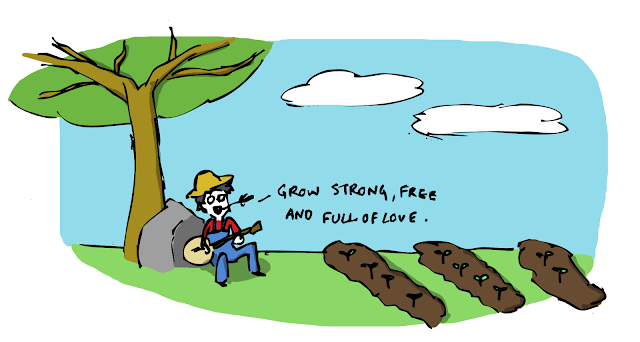 Over the past decade, the issue of food production has
rightfully gained a lot of attention. Documentaries like Food Inc. and the
modern animal welfare movement have gotten us all thinking about what we eat
and how it is produced. While this is a great thing, generally speaking,
getting informed about the food you eat doesn’t help anyone if your knee-jerk
reaction to new information is to abandon all the progress we’ve made over the
past century.
Over the past decade, the issue of food production has
rightfully gained a lot of attention. Documentaries like Food Inc. and the
modern animal welfare movement have gotten us all thinking about what we eat
and how it is produced. While this is a great thing, generally speaking,
getting informed about the food you eat doesn’t help anyone if your knee-jerk
reaction to new information is to abandon all the progress we’ve made over the
past century.
The world of 2015 is very different from the one of a
hundred years ago. The global population has doubled, and doubled again.
As we begin to rethink food production and learn from past mistakes, it is
tempting to romanticize a time in the past when everything was done by hand
without the use of pesticides. The simple fact is, that system doesn’t work in
2015 if you want to feed everyone; but a more important question is: would we
even want it to?
Setting aside for a minute the ways in which we raise
animals for food, let’s focus on fruits and vegetables. The driving goal
for food production needs to be sustainability. While it may be easy to produce
a bumper crop by dumping harmful pesticides on every farmer’s field, that
doesn’t help anybody if the field is radioactive the next year and the nearby
ocean is so full of contaminated runoff that the fish have five eyes and are
made of poison. Sustainability is the idea that we should farm as efficiently
as possible in a way that doesn’t waste resources or make it impossible for
people in the future to grow the same food in the same place.
So which is more sustainable: the classic version of farming
with overalls and hand-picked food, or the cold, machine-driven methods of
today where tomatoes live in greenhouses and are only ever outside as we move
them from the truck into the grocery store? As much as we all love overalls,
it may be time to relegate them to the wardrobes of urban, loft-living art
students.
Let’s continue looking at tomatoes, since most people have
tried to grow them at some point. If you’ve ever potted a tomato plant on your
balcony, you know how tough it can be to get even a single snack out of a
plant, never mind a pot of pasta sauce. Modern tomato farms use greenhouses to
direct as much light as possible onto plants. They recycle carbon dioxide from
industrial practices to speed plant growth, and they don’t need to use much
pesticide because they are enclosed. The upshot is that they can grow 70
kg (154 lbs) of tomatoes in one square meter of soil. Try producing that on
your balcony.
Modern farms can also be insanely efficient with water, if they have a mind to. In an
enclosed system where water condenses on the walls of a greenhouse and is
collected and recycled, one kg (2.2 lbs) of tomatoes can be grown using between
4 and 6 liters (1 – 1.6 gallons) of water.
By comparison, farms that allow water to evaporate away – I’m looking at
you, overalls – need as much as 60 liters (16 gallons) to grow the same amount.
One area where technically advanced farming is at a
disadvantage is in transporting food to the places it needs to go for people to
buy it. Large industrial farms are located away from cities where large plots
of farmable land exist. However, even here science and technology have made
things better. Foods in transport are often stored with gases, chips, or in bags
that ensure they ripen at just the right time, leading to proportionally less waste than traditional farmers can manage. The carbon footprint of
shipping these foods is also a problem, but as electric vehicle technology
improves and the world moves towards renewable energy systems, those impacts can also be reduced.
The lesson here is that knowledge and technology will help
us feed the world in a sustainable way and we shouldn’t shun improvements to
farming processes on principle alone. With the right policies in place to
ensure that corporate greed does not win out over environmental sustainability
and healthy produce, high-tech farming will save lives and keep us all fed.






4 comments:
Amazing write-up. I’m a regular website visitor of your blog and value you taking the time to maintain the superb site.
nice
zzzzz2018.5.7
lacoste outlet
coach outlet store online
supreme new york
coach outlet
ray ban eyeglasses
prada handbags
moncler uk
los angeles lakers jerseys
miami heat jersey
pandora charms
20180724 junda
ralph lauren outlet
michael kors outlet
light up shoes
uggs outlet
coach outlet store online
canada goose jackets
adidas crazy
burberry outlet
michael kors outlet
jordan shoes
Post a Comment